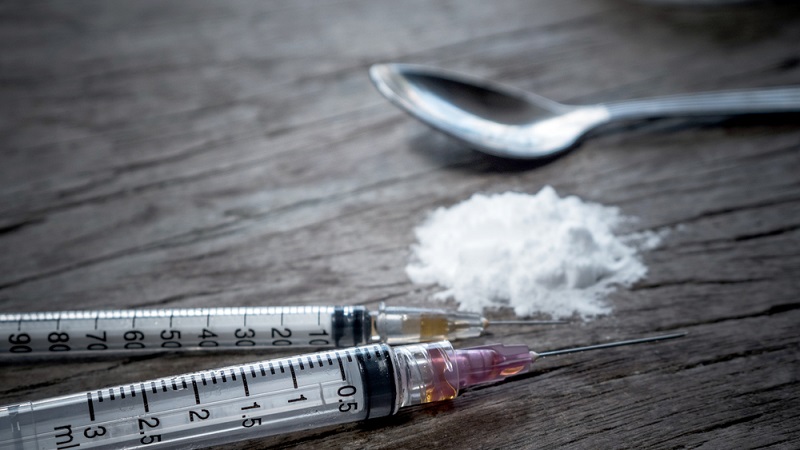Horse tranquilizer emerges as new and deadly street drug in US
A study in Philadelphia found that this tranquilizer is involved in nearly one-third of fatal opioid drug overdoses there.

A horse tranquilizer is increasingly popping up as a street drug in the U.S., and it is now involved in nearly one-third of fatal opioid drug overdoses in Philadelphia, according to a new study.
The tranquilizer drug, called xylazine, is not considered an opioid, but it is often found mixed with the opioids heroin or fentanyl, a combination sometimes referred to as "tranq dope," according to the study published Tuesday (Feb. 2) in the journal Injury Prevention.
The researchers found that detection of the drug during post-mortem exams has spiked sharply over the past decade among people who have died from opioid overdoses in Philadelphia.
The findings suggest that "the opioid epidemic throughout the USA continues to evolve," the authors wrote. They say that overdose deaths involving xylazine may be underreported in the country because labs don't always test for it. The authors call for increased monitoring of xylazine abuse in the U.S., as well as its health consequences.
Related: 10 interesting facts about heroin
Animal tranquilizer
Xylazine is a sedative used in veterinary medicine, particularly in horses. In the U.S., it is not approved for use in humans and is known to cause potentially dangerous side effects in people, including low blood pressure and a slowed heart rate.
Illicit drug users in Puerto Rico have been taking xylazine with opioids since the early 2000s, and more recently, it has appeared in the illegal drug supply in the continental U.S. Health departments in Maryland, Ohio and Michigan have all reported several cases of overdose deaths involving xylazine over the past two years. But overall, research on xylazine in the U.S. illegal drug supply is very limited.
Get the world’s most fascinating discoveries delivered straight to your inbox.
In the new study, the researchers analyzed data on overdose deaths in Philadelphia from 2010 to 2019. Specifically, they examined unintentional deaths involving heroin or fentanyl, which are both types of opioids.
They found that, between 2010 and 2015, xylazine was detected in just 2% of these overdose deaths. But by 2019, that figure had jumped to 31%.
What's more, data on illegal drug seizures from the U.S. Drug Enforcement Administration suggest that xylazine is increasingly appearing in "polydrug" samples, which contain heroin or fentanyl along with other drugs. Between 2010 and 2013, none of the polydrug samples that were tested in the agency's labs contained xylazine, but by 2019, 25% contained the drug.
Studies on the health effects of xylazine combined with opioids are limited, but some research suggests that the mixture may increase the risk of opioid overdose death.
Still, the researchers note that their study could not determine which drug or combination of drugs was involved in the Philadelphia overdose deaths.
It's also unclear exactly why xylazine is being added to the U.S. drug supply and whether the people who overdosed knowingly took the drug. Some focus groups in Philadelphia have found that people who use illegal drugs report that xylazine makes the effects of opioids last longer, the authors said.
The authors concluded that "further study is needed to understand the synergistic effects of
fentanyl and xylazine use by humans and to better contextualize the reasons for its use in the USA." And whenever possible, health jurisdictions should consistently test for the drug, they said.
Originally published on Live Science.

Rachael is a Live Science contributor, and was a former channel editor and senior writer for Live Science between 2010 and 2022. She has a master's degree in journalism from New York University's Science, Health and Environmental Reporting Program. She also holds a B.S. in molecular biology and an M.S. in biology from the University of California, San Diego. Her work has appeared in Scienceline, The Washington Post and Scientific American.


